Superman Arcade – The Machine That Never Let You Down!
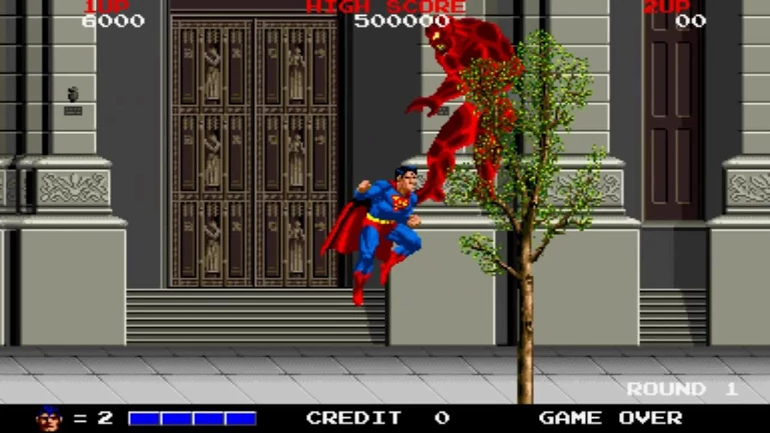
n 1988, when the three Superman movie adventures were already a thing of the past, and as Americans were getting a new animated series of the Man of Steel, Taito released what seemed like an interesting arcade game. The goal was to celebrate the character’s 50th anniversary—Superman first appeared in Action Comics #1, published in the U.S. in May 1938. This arcade, presented as a side-scrolling action game, managed to cross international borders thanks to its iconic hero and decent quality.
Our arcades didn’t miss out on it, and Superman quickly became a sought-after machine for killing time. To dazzle players, it featured the classic Superman as the hero, two-player simultaneous gameplay, music from the movies, and very colorful graphics.
When developing this game, they didn’t bring in top-tier writers—the story could be described as clichéd, boring, or even nonexistent if we’re being picky. It all boils down to this: some very powerful, very evil aliens want to take over Earth, so Superman fights them with… all his weapons? No, just his fists. If we want to add a little more intrigue, we could mention that if you have a friend join in, they’ll play as Red Superman—a fun nod to fans who read the comic where the two Supermen, red and blue, fought each other.
Gameplay
Superman wasn’t a full-fledged beat 'em up but rather an action game. The enemies aren’t as plentiful as in other companies’ beat 'em ups, and to make things worse, there are many matamata-style shooting levels. The arcade can be divided into three types of stages: side-scrolling, vertical-scrolling, and shooting. The main ones are the side-scrolling levels, where you punch your way through enemies until you reach a boss.
Simplicity defines this mode—enemies have very few designs, the stages offer little interaction beyond breaking walls or grabbing boxes, and the moves aren’t anything special. Superman can walk and fly by pressing up on the joystick. One button punches, another kicks (though the kicks are pretty stiff, let’s be honest), and if you hold the punch button for a few seconds, you’ll fire an energy ball.
And since when does Superman shoot energy balls? Who knows—maybe Taito couldn’t figure out which powers to give him (as if Superman has too few…). You can also collect items that let you unleash special attacks, like the Super Blast Punch (a powered-up energy ball) or the Mass Terminator (wipes out all on-screen enemies). The next gameplay style is vertical-scrolling, identical to the side-scrolling but with the camera automatically moving downward as Superman flies. Nothing noteworthy here.
Lastly, there are the shooting levels, similar to what’s become trendy in action games like Astro Boy: Omega Factor or Dragon Ball Advance Adventure. Here, you control Superman as he flies horizontally with his fist forward, able to shoot energy beams, throw punches, or fire those energy balls. The aerial stages pit you against helicopters, meteors, rocks, structures, and all kinds of enemies looking for trouble.
The arcade consists of five levels: Metropolis, San Francisco, Las Vegas, Washington D.C., and The Spaceship. After the last one, you’ll face the final battle, deciding Earth’s fate. The difficulty, mechanics, lack of enemy variety, and level design don’t measure up to other arcades of the time. If it weren’t for the Superman branding, it would’ve been a total disaster—but with the Man of Steel, it at least drew in fans. Unfortunately, those fans quickly got a cold shower, because a Superman game where the hero barely uses his powers makes little sense.
Graphics
Generally, arcade games back then surpassed 16-bit console games like the Super Nintendo or Mega Drive in technical quality. But this time, the rule was broken—Superman looked like it could’ve been on one of those consoles. With simplistic (though colorful) backgrounds, a handful of enemy types, and animations made up of about four frames, the game didn’t impress in any way. The stages tried to offer somewhat realistic depictions of the cities, but they fell into excessive repetition.
The bosses weren’t anything special either, with originality being completely absent. One positive note: the sequence where Clark Kent transforms into Superman stands out—everything else is forgettable. The pose Superman strikes when flying fist-first will stick in your memory, as will the awkward leg-kick animation.
Music & Sound
The classic movie theme is legendary, and even today it gives us chills when we hear it. But that doesn’t mean looping it endlessly throughout the game (with a few exceptions) is a good idea. In short, you’ll end up sick of the famous theme, which plays nonstop without giving you a breather. As for sound effects… nothing worth mentioning, just like most other aspects of the game.
Conclusion
Taito Corporation has an amazing track record in arcade games, but even the biggest companies have failures in their history. While developers like Konami nailed licensed arcade machines, others like Taito stumbled hard with products like Superman. This game will be remembered as yet another failed attempt to bring the Man of Steel to video games—a character who still can’t seem to get a truly great game. A must for die-hard Superman fans, but everyone else should run far away.
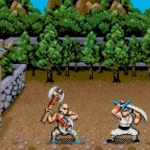 Tiger Road – The Sleeper Hit of Arcade Beat 'em Ups!
Tiger Road – The Sleeper Hit of Arcade Beat 'em Ups! Go Go Mile Smile Arcade: A Classic Retro Gaming Experience
Go Go Mile Smile Arcade: A Classic Retro Gaming Experience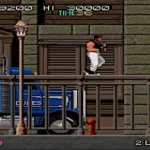 Bad Dudes vs. Dragon Ninja: Reviving the Excitement of 80s Arcade Glory
Bad Dudes vs. Dragon Ninja: Reviving the Excitement of 80s Arcade Glory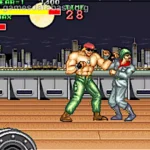 BIG FIGHT: BIG TROUBLE IN THE ATLANTIC OCEAN: Unveiling the Epic Brawl!
BIG FIGHT: BIG TROUBLE IN THE ATLANTIC OCEAN: Unveiling the Epic Brawl!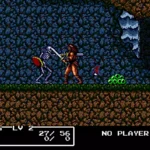 Cadash Unleashed: Exploring a Forgotten Gem
Cadash Unleashed: Exploring a Forgotten Gem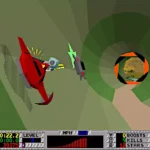 STUN Runner Arcade: Racing Through the Futuristic Frontier
STUN Runner Arcade: Racing Through the Futuristic Frontier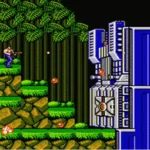 6 Games That Will Drive You Crazy...
6 Games That Will Drive You Crazy...
![Arcade Longplay [264] Superman](https://i.ytimg.com/vi/H0l6f3bmiGU/hqdefault.jpg)
Leave a Reply